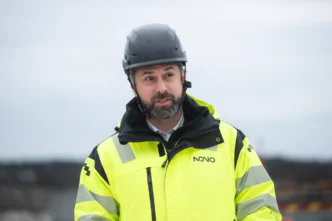Uber and Chinese autonomous vehicle company WeRide have announced plans to expand their commercial robotaxi partnership to 15 additional cities over the next five years. The move comes just five months after their successful launch in Abu Dhabi, and signals a significant step in Uber’s global strategy to integrate autonomous vehicles into its ride-hailing network.
Expanding Beyond the Middle East
The partnership between Uber and WeRide began in Abu Dhabi, where the companies launched a commercial robotaxi service. There, they operate with the support of local fleet partner Tawasul Transport, combining Uber’s routing and platform technology with WeRide’s autonomous driving capabilities. Following the Abu Dhabi rollout, plans were also announced to introduce the service in Dubai.
Now, Uber and WeRide aim to scale this model to 15 additional cities, focusing exclusively on regions outside of China and the United States. While specific cities have not been disclosed, the companies confirmed that the expansion will include locations across Europe. The approach mirrors Uber’s collaboration with Waymo, where Uber manages the customer interface and fleet logistics, and the autonomous vehicle partner provides the core self-driving technology.
This separation of responsibilities enables rapid scaling. By allowing AV partners like WeRide to focus on the tech, and Uber to handle the customer experience and ride logistics, the model streamlines operations in unfamiliar or emerging markets.
A Strategic Web of AV Partnerships
Uber’s agreement with WeRide is part of a broader strategy to cement its position in the autonomous vehicle space. Over the past two years, Uber has forged more than 15 partnerships across autonomous ride-hailing, delivery, and trucking services. In just the last two months, Uber announced collaborations with May Mobility, a self-driving vehicle startup based in Ann Arbor, Michigan; Volkswagen, a major automotive player; and Momenta, another Chinese autonomous driving firm.
These partnerships reflect Uber’s pivot toward a multi-partner AV ecosystem rather than building its own self-driving technology in-house. That effort was largely scaled back after Uber sold its self-driving unit, Advanced Technologies Group, in 2020. Since then, Uber has focused on aligning itself with companies that are already leaders in the space.
WeRide, which recently went public on the Nasdaq in late October, has become one of the most prominent players in China’s autonomous vehicle industry. Its technology is already being used in various pilot programs and commercial deployments across multiple continents. Teaming up with Uber enables WeRide to rapidly access international markets and gain exposure outside of China.
The companies are positioning their robotaxi services not just as a futuristic novelty, but as a reliable, scalable alternative to human-driven rides. As regulatory hurdles are cleared and more cities approve robotaxi trials, Uber and WeRide are poised to be first movers in the autonomous mobility race.
With this latest announcement, Uber is continuing to strengthen its role as a key connector in the autonomous vehicle landscape. Instead of building everything in-house, the company is becoming a platform that brings together various AV technologies under one user-friendly interface — the Uber app.













